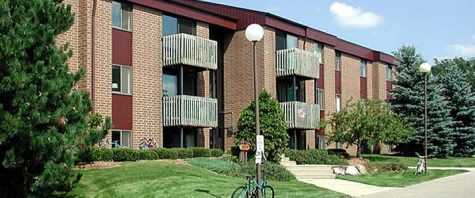Bodies Revealed museum exhibit returns after 10 years by popular demand
By popular demand, the exhibit Bodies Revealed has returned to the Grand Rapids Public Museum after 10 years. Originally conceived in 2004, Bodies Revealed is a travelling exhibit. It first came to Grand Rapids in 2009 and was very popular at the time. In the years since, Bodies Revealed continued to resurface in surveys of museum-goers conducted by the Grand Rapids Public Museum. That continued interest among the public, as well as the growing medical community in the area, were part of the museum’s decision to bring back the exhibition.
Featuring the preserved remains of human bodies donated to science, the exhibit is developed by EM (experimental media) Group and highlights major systems of the body with physical examples, revealing the secrets of the human body layer by layer as visitors walk through. Museum-goers are treated to a unique lesson about the inner workings of the human body. In the process they are entertained, not only by the stark reality of the remains on display, but also by the startling beauty of their arrangement and composition.
The bodies and organs, harvested from donors who died of natural causes, are displayed in cases or posed to show how the human body is composed from all angles. They are preserved through a polymer process which uses a liquid silicone to retain the integrity of the organs. Once preserved, the bodies are posed seated or standing. The skin is removed from the bodies so that the muscles and internal organs are fully visible to observers. One of the bodies in the exhibit is posed in a running position, with the layers of muscle flared out on wires to show the intricacy of the muscular system.
Beginning with the skeletal system, the exhibit travels through the major systems of the body room by room, working inward. This was done in order to make the experience feel like walking through an anatomy textbook, according to Kate Kocienski, vice president of marketing and public relations at the Grand Rapids Public Museum. The exhibit details organs from the digestive, respiratory, circulatory, reproductive systems and more. The last room puts all of the systems together in one case, showing a cross-section of an entire human body so the systems’ interaction is visible. “Whether you’re in the medical community or not, it does give you opportunities to see things that you wouldn’t be able to see outside medical school,” Kocienski says.
Unlike the rest of the museum, Bodies Revealed is intensely quiet, hushed museum- goers gathered around display cases and bodies with respect that borders on reverence. Perhaps awed by the presence of genuine specimens, people of all ages speak in lowered tones, reading every sign. Even children are silently observant in every room.
The exhibit provides an experience with science that is fully immersive, with lighting, video and audio augmenting the displays in a manner that verges on art. The circulatory systems are displayed in liquid-filled glass cases and colored through a process called corrosion casting. This fills the blood vessels with colored polymer so that the delicate, branching arteries are on display in detail. Against the dark background of the museum walls, they resemble colorful trees.
“This is an incredible opportunity for people to learn about their bodies,” Kocienski said. The museum hopes that being able to see their bodies from within will help museum-goers pay more attention to their own bodies. At several points throughout the exhibition, healthy organs are displayed alongside diseased ones. In one case, a healthy set of lungs is placed next to a set of darkened smoker’s lungs, providing an undeniable contrast. Kocienski says that “Hopefully it will prompt people to … think about their habits and what they could change to be more healthy.”
Bodies Revealed will be on display at the Grand Rapids Public Museum through spring, closing on May 17, 2020. Entrance to the exhibit is timed and tickets are available to purchase on the museum website, which Koscienski urges visitors to take advantage of in order to ensure they are able to secure a place in line, especially on weekends. The museum anticipates heavy traffic through the exhibit over the weekend and tickets will sell quickly.











Rich Funquetone • Nov 22, 2019 at 4:51 pm
Very poetically, yet articulate. Wonderfully written! Thank you.
shiloh • Nov 22, 2019 at 11:21 am
Thank you for sharing.
shiloh • Nov 22, 2019 at 11:21 am
This sounds facinatingly gross. Thank you for sharing.